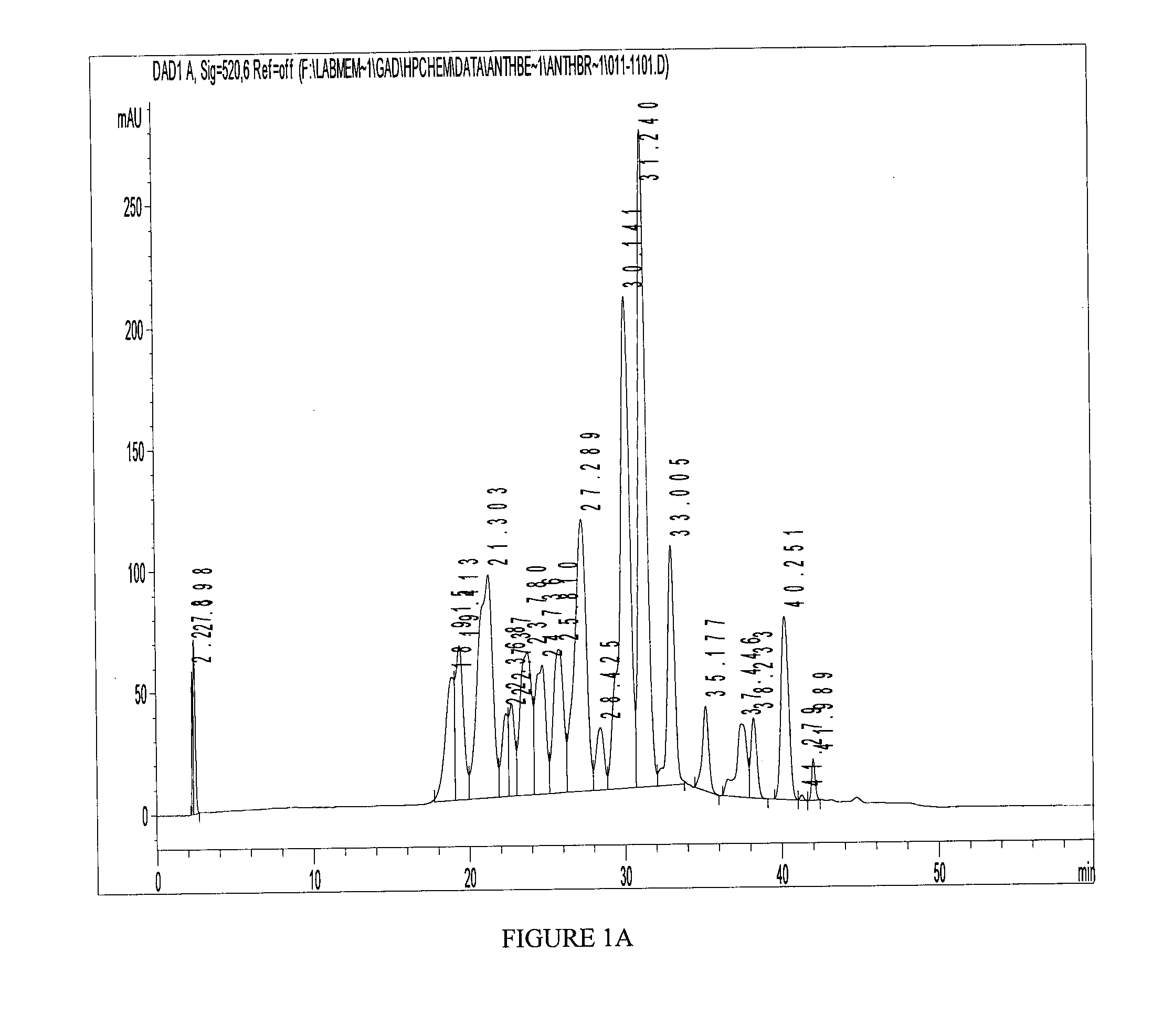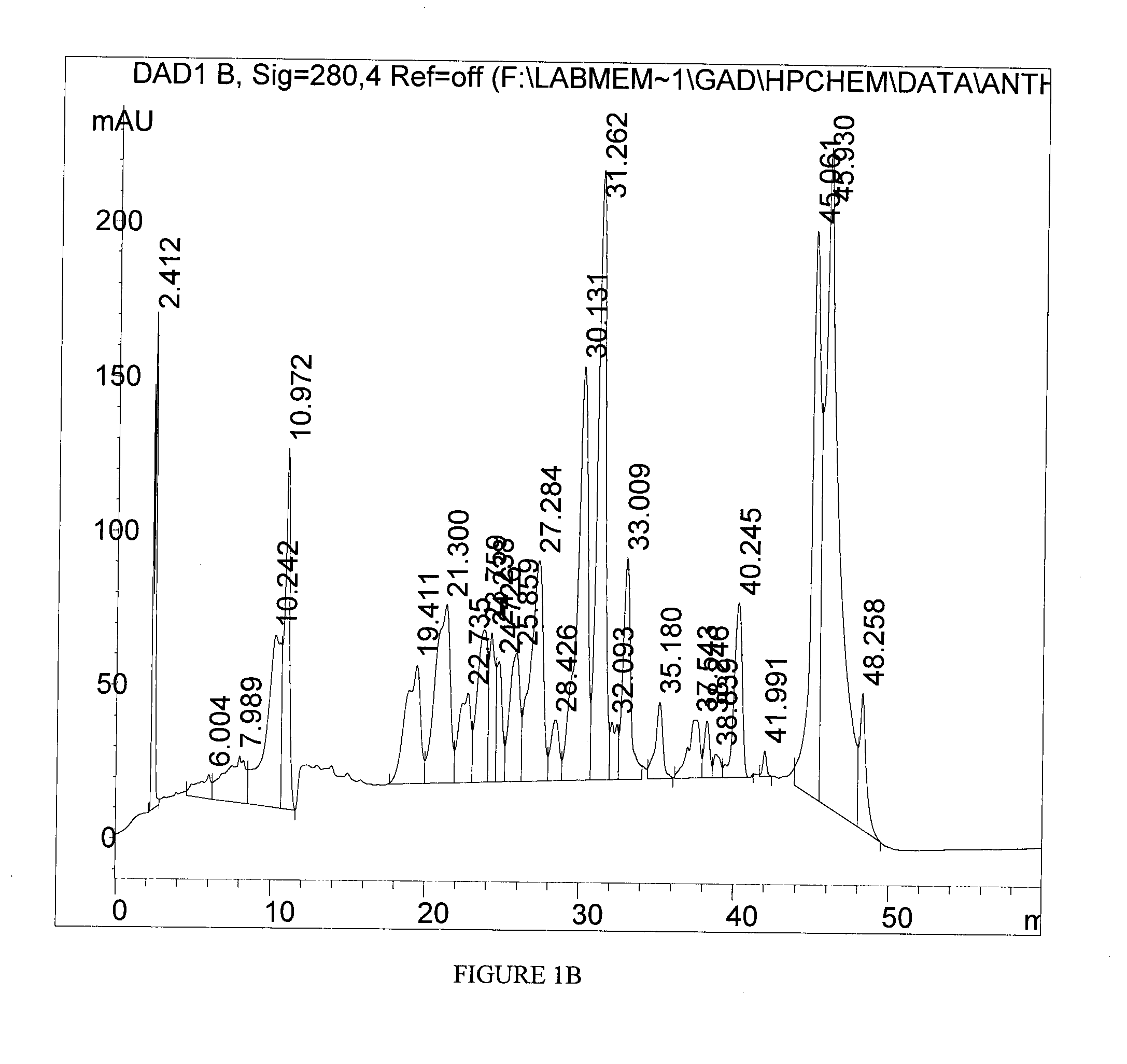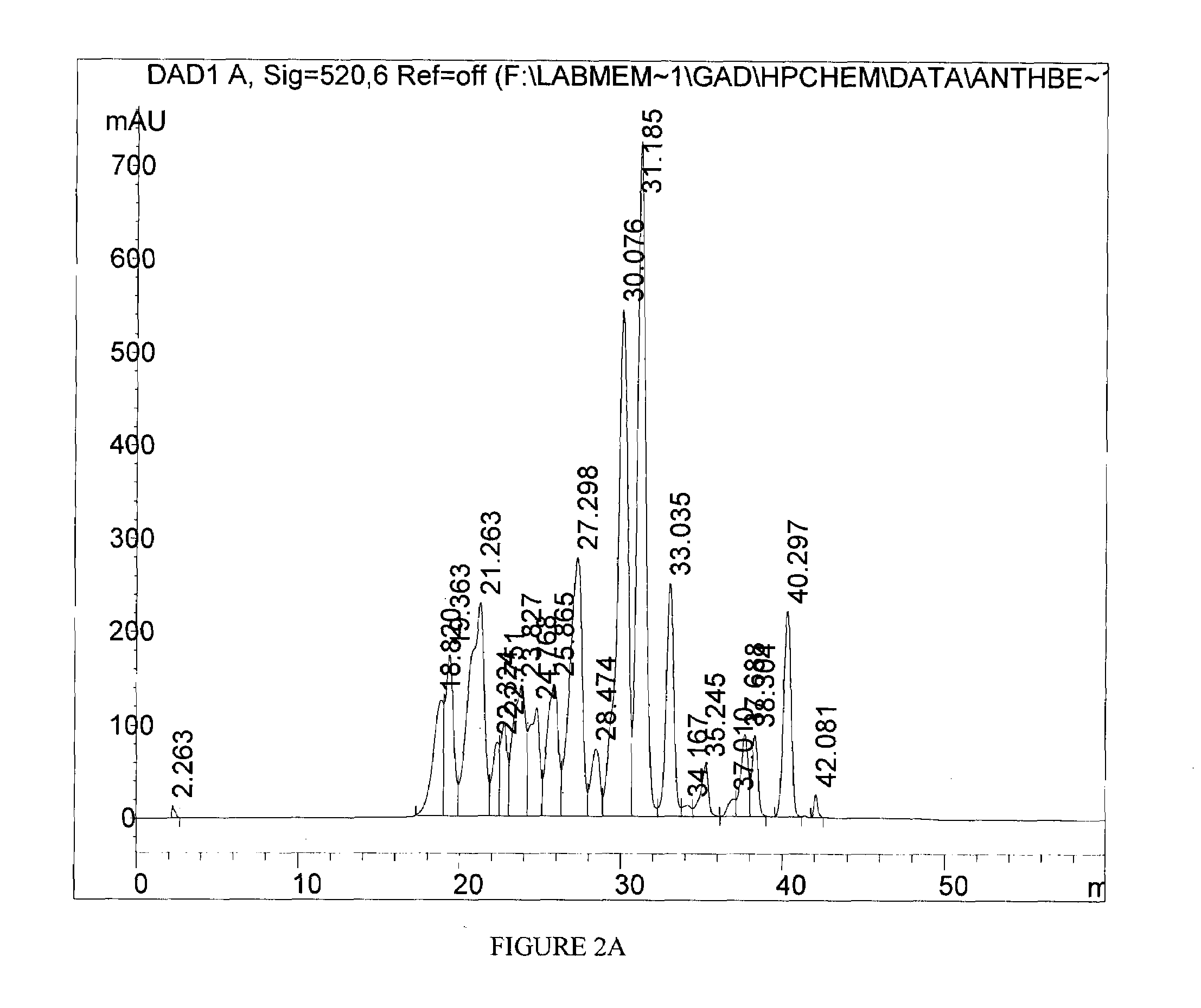Berry Preparations For Treatment Of Diabetes And Metabolic Syndrome
- Summary
- Abstract
- Description
- Claims
- Application Information
AI Technical Summary
Benefits of technology
Problems solved by technology
Method used
Image
Examples
example 1
Anthocyanin Extraction from Berries
1.1. Preparation of Berry Extracts
[0173]Frozen blueberry fruits (1 kg) were blended in a mixer with 3 liters of methanol, acidified with 0.5% trifluoroacetic acid (TFA), and filtered first through muslin sheets, and subsequently through filter paper # 4, using suction. The collected hydro-alcoholic extract was evaporated to about 500 mL using a rotary evaporator at a temperature not exceeding 40° C. The concentrated aqueous extract obtained was partitioned against ethyl acetate (EtOAc) (500 mL×4) to remove lipophilic material. The aqueous layer (500 mL) was divided into two equal portions after evaporation of any remaining EtOAc. Each portion was applied on an Amberlite XAD-7 column (18×6.5 cm), preconditioned with acidified water (0.5% TFA). The columns were washed with acidified water (0.5% TFA) until the color of eluting water faded (approximately 3 liters of acidified water). The crude anthocyanin mixture was eluted with 1 liter of acidified me...
example 2
Evaluation of Antidiabetic Activity in Mice
2.1. Methods for Evaluating Antidiabetic Activity in Mice
[0178]Five-week-old male C57bl / 6J mice were purchased from Jackson Labs (Maine) and were acclimatized for 1 week before being randomly assigned into the experimental groups. The animals were housed four to a cage with free access to water in a room with a 12:12 hour light-dark cycle (7:00 AM-7:00 PM), a temperature of 24±1° C., and the animals were weighed weekly. During the acclimatization period, each animal was fed a regular diet ad libitum. At 6-weeks old, the mice were randomly divided into two groups: low fat or very high fat fed groups. The mice continued to receive either a low fat diet (LFD) or very high-fat diet (VHFD) for a 12-week period. The high-fat diet food was purchased from Research Diets Inc., and the nutrition content of very high-fat diet food was similar to that of the low fat diet food except that carbohydrates were lower (70 kcal % vs. 20 kcal %) and the additi...
example 3
Hypoglycemic Effect of Delphinidin-3-Glucoside and Malvidin-3-Glucoside Relative to Blueberry Anthocyanin-Enriched Extracts and Metformin in Insulin Resistant C57bl / 6J Mice
[0187]The hypoglycemic effects of delphinidin-3-glucoside (Dp 3-glc) and malvidin-3-glucoside (Mv-3-glc) relative to blueberry anthocyanin-enriched extracts and metformin in insulin resistant C57bl / 6J mice were investigated. Malvidin glycosides are the predominant anthocyanins of the lowbush blueberry extracts. Delphinidin-3-glucoside likely is a major component of the blueberry extracts. It is reported to be the active hypoglycemic compound from the leaves of Vaccinium species. The animals were maintained on a high fat diet and food restricted 4 hours prior to treatment by gavage. The extracts and metformin were formulated with 66% Labrasol as the delivery vehicle
[0188]Our results showed that malvidin-3-glucoside had hypoglycemic activity at a dose of 300 mg / kg that was comparable to the hypoglycemic activity of ...
PUM
| Property | Measurement | Unit |
|---|---|---|
| Fraction | aaaaa | aaaaa |
| Fraction | aaaaa | aaaaa |
| Dimensionless property | aaaaa | aaaaa |
Abstract
Description
Claims
Application Information
 Login to View More
Login to View More - R&D
- Intellectual Property
- Life Sciences
- Materials
- Tech Scout
- Unparalleled Data Quality
- Higher Quality Content
- 60% Fewer Hallucinations
Browse by: Latest US Patents, China's latest patents, Technical Efficacy Thesaurus, Application Domain, Technology Topic, Popular Technical Reports.
© 2025 PatSnap. All rights reserved.Legal|Privacy policy|Modern Slavery Act Transparency Statement|Sitemap|About US| Contact US: help@patsnap.com



